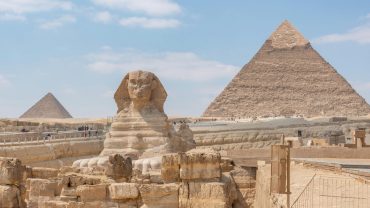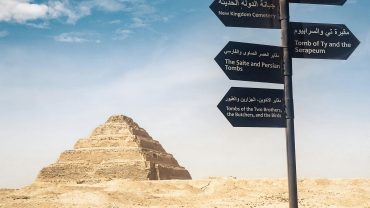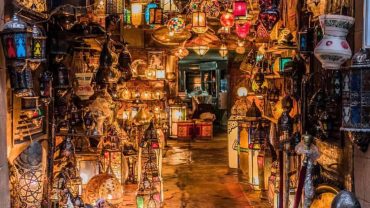Nestled beneath the towering cliffs of Deir el-Bahari on the west bank of the Nile in Luxor, the Mortuary Temple of Hatshepsut stands as one of the most elegant and uniquely designed temples in all of ancient Egypt. Built for Queen Hatshepsut, one of the few and most successful female pharaohs in Egyptian history, this temple is a testament to her vision, ambition, and lasting legacy.
Who Was Hatshepsut?
Hatshepsut ruled Egypt during the 18th Dynasty (around 1479–1458 BCE) and is celebrated for her peaceful reign, architectural achievements, and the expansion of trade. She defied traditional gender roles by assuming full powers of a pharaoh, often depicted in male attire and with a ceremonial beard to legitimize her rule. Her temple reflects her ambition to immortalize her legacy through stone and symbolism.
Architectural Beauty and Symbolism
The Temple of Hatshepsut is unlike any other in Egypt. Designed by her royal architect Senmut, the temple is built into a natural limestone cliff, blending natural beauty with precise symmetry. It features three large terraces, each connected by grand ramps and surrounded by rows of elegant columns.
Key highlights of the temple include:
- The Colonnaded Terraces: Each level features long colonnades lined with statues of Hatshepsut, many of which show her in male pharaonic form.
- Reliefs and Inscriptions: The temple’s walls are adorned with vibrant scenes depicting the divine birth of Hatshepsut and her famous expedition to Punt, a prosperous land thought to be located on the Horn of Africa. These scenes not only showcase her legitimacy as ruler but also document one of the earliest recorded trading missions in history.
- Sanctuary of Amun-Ra: At the back of the temple lies a sanctuary dedicated to Amun-Ra, the chief deity of Thebes. This sacred space represents Hatshepsut’s devotion and her claim to divine authority.
The Temple’s Fate Through Time
Despite her achievements, Hatshepsut’s legacy was nearly erased after her death. Her stepson, Thutmose III, attempted to remove her name and images from temples across Egypt, including this one. Many of the statues and inscriptions were defaced, but fortunately, much of the temple survived.
Today, the temple has been extensively restored and is considered one of the best-preserved ancient structures in Egypt. It remains a key destination for historians, archaeologists, and tourists alike.
Visiting Hatshepsut Temple Today
The temple lies close to other important sites like the Valley of the Kings and the Colossi of Memnon, making it a central stop on any West Bank tour of Luxor.
- Opening Hours: Usually open from 6:00 AM to 5:00 PM.
- Best Time to Visit: Early morning is ideal to avoid crowds and high temperatures.
- Tips: Bring a hat, water, and walking shoes. Consider a licensed tour guide to fully understand the temple’s historical and cultural significance.
Conclusion
The Temple of Hatshepsut is not just an architectural wonder—it’s a symbol of strength, ambition, and legacy. It tells the story of a queen who dared to defy expectations and transferved her name into the stone of history. A visit to this majestic site offers a deeper understanding of Egypt’s New Kingdom, and a rare glimpse into the life of one of its most remarkable rulers.




Comment (0)